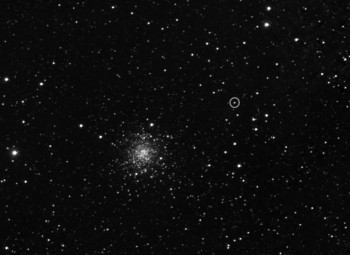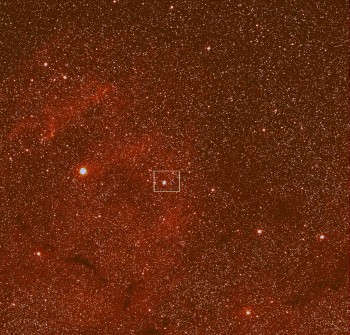
Narrow-angle view of comet 67P/CG taken on 21 March.
Credits: ESA © 2014 MPS for OSIRIS-Team MPS/UPD/LAM/IAA/SSO/INTA/UPM/DASP/IDA
Rosetta has caught a first glimpse of its destination comet since waking up from deep-space hibernation. These two ‘first light’ images were taken on 20 and 21 March by the OSIRIS wide-angle camera and narrow-angle camera, as part of the six-week instrument commissioning period.
Rosetta is currently around 5 million kilometres from the comet, and at this distance it is still too far away to resolve – its light is seen in less than a pixel and required a series of 60–300 second exposures taken with the wide-angle and narrow-angle camera. The data then travelled 37 minutes through space to reach Earth, with the download taking about an hour per image.
The colour composite (below) shows a background of hydrogen gas and dust clouds in the constellation Ophiuchus. The white box indicates the position of the close-up taken with the narrow-angle camera (above) with the comet appearing towards the top of this box, close to the bright globular star cluster M107.

Wide-angle view of region containing comet 67P/CG, taken on 20 March.
Credits: ESA © 2014 MPS for OSIRIS-Team MPS/UPD/LAM/IAA/SSO/INTA/UPM/DASP/IDA
Read the full story just published on the ESA portal, here!









Discussion: no comments